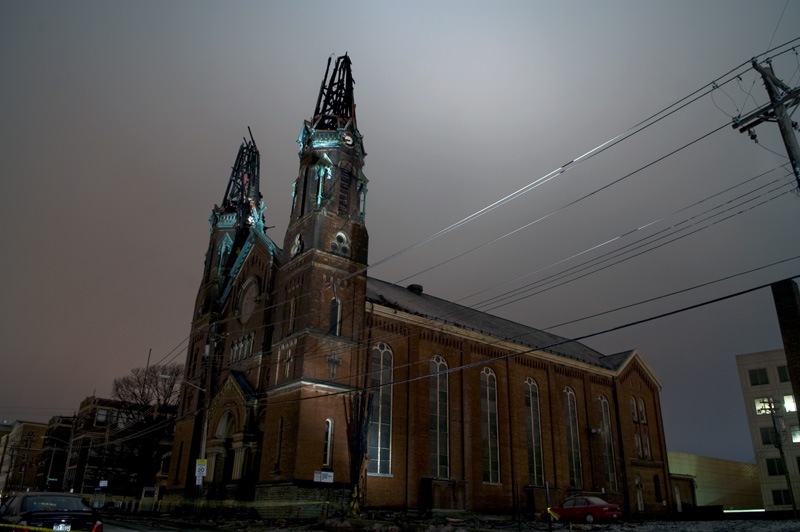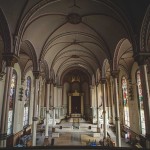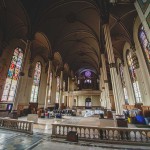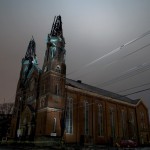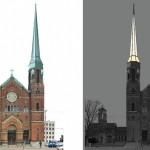Old Saint George has sat vacant in Clifton Heights for many years, but will soon come back to life when Crossroads opens its newest church there.
The announcement was made earlier this year, but follows a string of news signaling that the urban regeneration of Cincinnati is more than skin deep. In addition to tens of millions of dollars in private investment flowing into the city, both jobs and population are growing. This has resulted in budget surpluses, growing enrollment at Cincinnati Public Schools, and a need for a new permitting center.
Crossroads will fill a space long occupied, and originally built, for the Roman Catholic Archdiocese of Cincinnati in 1874. It stayed there until St. George parish was merged with St. Monica parish down the street in 1989, and continues to carry on there to this day.
Since that time the building has sat vacant with a variety of proposals coming forward that would have restored the church for alternative uses.
Crossroads leadership say that their $12 million plan, which is celebrated by the Archdiocese, will not only restore the historic place of worship, but also bring it up to modern standards so that it boasts wifi and the audio and video displays that have become synonymous with Crossroads’ services.
“We’ll hold weekend services in this space, which will become the permanent location for our Crossroads Uptown site that currently meets at Bogart’s,” Jennifer Sperry, Crossroads Client Services Manager, told UrbanCincy.
“In addition, we hope for people to use our building as a community center, as it’ll be open throughout the week. We envision it as a space where students and locals can hold meetings, meet with project groups, pray, read, etc.”
The multitude of uses and variety of technology are all attempts to make inroads with younger individuals that have largely strayed away from religion throughout the United States.
At the University of Cincinnati, for example, Crossroads says that some 99% of students are not part of a church on campus. While they may attend churches elsewhere, such a huge gap also presents an opportunity for Crossroads.
Once complete, the restored Old Saint George will feature an 800-seat auditorium, a worship and community center, lecture venues, a coworking space with free coffee and wifi, and will see the structure’s grand steeples restored to their former glory before being burned down following a freak lightning strike.
Sperry says that they expect some 2,000 people to visit the facility on a weekly basis, which will be open seven days each week.
Unlike Crossroads massive facility in Oakley, Old Saint George is in a dense urban environment and is not surrounded by a sea of parking. As a result, church officials are expecting many of its visitors to arrive by walking, biking – a Red Bike station is located one-block away – or public transportation. But they also say that they are working with owners of nearby parking garages to determine if those spaces can be used during services.
The project is being funded mostly through private donations, but also through New Market Tax Credits. Project leaders say that several million more dollars need to be raised in order to complete financing, but also say that they are moving forward full speed ahead.
“The fundraising effort will be completed as part of a campaign that we’re launching this fall,” Sperry said. “We will use some of the initial money given in the campaign to finish the Crossroads Uptown project.”
Sperry says that the goal is to move into the restored structure by August 2016. Until then, she encourages those interested in learning more about Crossroads to attend their services currently being held at Bogart’s on Short Vine every Sunday at 7pm.
